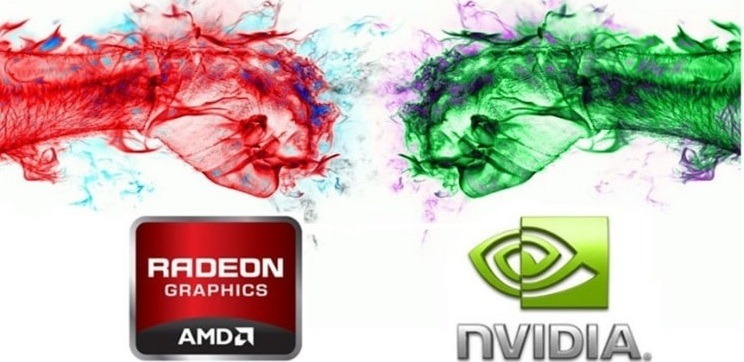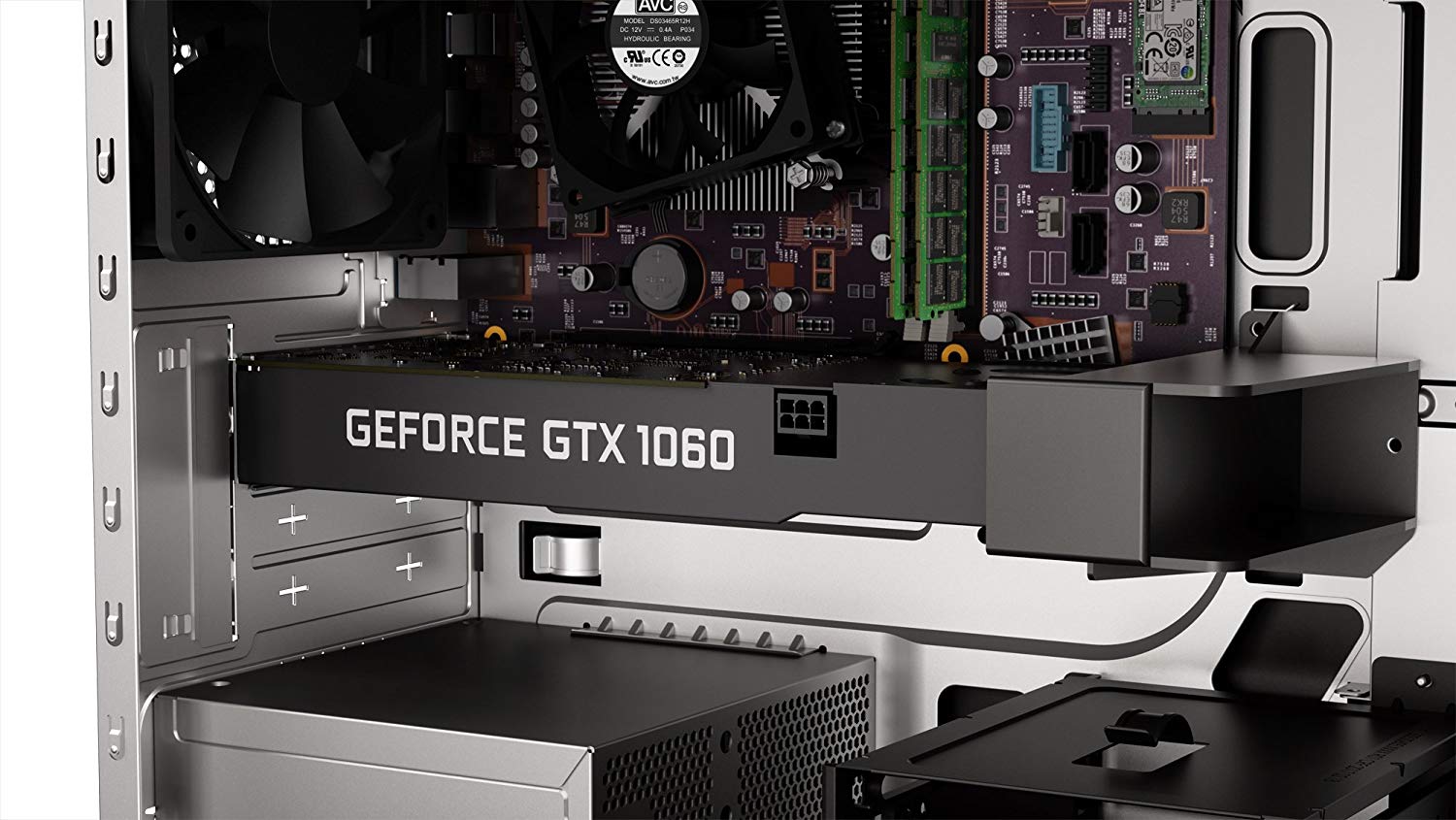Building a gaming computer always revolves around one crucial question:
Do I really want to play video games any more?
Just kidding. It’s “Which graphics card should I buy?”
A graphics card is the vital component of every gaming PC, and you want the best GPU for gaming you can get. NVIDIA and AMD are the most famous manufacturers of graphic cards, and for good reason. Their competition has spurred fast-paced development of graphics cards and a rapidly evolving gaming experience.
So which brand is better, and which graphics card should you use?
AMD vs. NVIDIA: Main Differences
Aside from their GPUs, AMD is also known as a famous microchip manufacturer creating some of the best CPUs for gaming. They started out doing CPU development and production, and they’re in a furious CPU manufacturing race with Intel.
Radeon is a GPU brand that was initially owned by ATI. ATI started the development of graphics cards in the early 90s and successfully produced Radeon GPUs until 2006. Then, AMD bought the brand and continued production.

NVIDIA, on the other hand, was one of the earliest graphics card manufacturers competing on the market. They started working on GPU development in the early 90s, just like ATI. During that time, other competitors were not so lucky (or capable), so ATI and NVIDIA cemented their places in the GPU market.
Today, NVIDIA invests in different fields of technology development, but its GPU brand GeForce is still the key player with GPUs like the awesome 1080Ti cards.
Current Situation
Currently, we must say that NVIDIA is the stronger and more valuable company. Because of their size and financial strength, they’ve started working on AI and mobile technologies.
On the other hand, AMD, as a smaller company, sticks to CPU and GPU development, but that does not considerably influence our discussion. As far as gaming hardware goes, both companies are competing on an equal level, with each new generation better than the previous one.

NVIDIA made the GPU used for the Xbox 360, while AMD’s GPU runs the PS3. NVIDIA now leads in the production of top performance GPUs while AMD graphics cards for gaming are giving the best price-performance ratio. Obviously, the race is still on, and without a clear winner in sight. Let’s discuss the significant GPU categories, features, and characteristics as we compare these two giants.
AMD vs. NVIDIA: Price and Performance
So who produces better and cheaper GPUs? This is not an easy question to answer, so to avoid oversimplifying and overgeneralizing, we need to break it down into several smaller questions.
GPUs are produced in a broad spectrum of performance and price ranges. Performance and price vary significantly from generation to generation and from model to model. We would never get an accurate answer for these questions by comparing the top performer GPU of one company with the budget GPU of another.

Thus, the only way to get a credible answer is to compare the matching models of GPUs in a true apples-to-apples comparison.
Top-Performance GPUs
Within the top performance category, we’ll compare AMD’s Radeon RX Vega 64, NVIDIA’s GTX 1080 Ti, and NVIDIA’s Titan V. Titan V gets a decisive victory in performance over the other two. It’s 24% more powerful than the GTX 1080Ti and 67% more powerful than the Vega 64. These numbers are reflected in the price of each GPU; the RX Vega 64 costs about $400, the GTX 1080 Ti costs $900, and the Titan V goes for an astonishing $2000.

RX Vega 64 has an attractive price tag, but we’re grading on performance here, and it just can’t compare to the two NVIDIA cards. The Titan V is a powerhouse, but most gamers won’t see enough extra performance in most games to justify its cost. Since the NVIDIA GTX 1080 Ti shows a better balance between price and performance, we have to declare it the winner in this category.
High-Performance GPUs
This is the category for GPUs that show great performance, but do not represent the best the company has to offer. Competitors in this category are the “regular” NVIDIA GTX 1080 and the Radeon RX Vega 64. Vega 64 again? It rightfully belongs to this category, but at the same time, it is the best the AMD has to offer.
According to benchmarks, tests, and reviews, these two GPUs show equal performance. However, price comparison shows different results. GTX 1080 costs around $100 more than Vega 64. That makes the RX Vega 64 a clear winner in this category.
Midrange GPUs
Competition in this category started between the RX Vega 56 and the GTX 1070 after the release of the Vega 56 in 2017. Late in that year, NVIDIA released the GTX 1070 Ti.

The Vega 56 wins the performance test against the regular GTX 1070 by 14%. To secure the victory, it comes almost $100 cheaper, too. On the other hand, the GTX 1070 Ti is slightly better than the Vega 56 in performance, while there is no significant difference in price. The battle between these three is close, but the GTX 1070 Ti wins for having the best overall balance of price and performance.
Budget GPUs
When you’re looking at cheap graphics cards for gaming, the situation is a bit different. Since you’re on a budget, the price becomes a more vital component than the card’s performance. Still, it’s entirely possible to find a model that satisfies both criteria.
The main competitors within this category are the GTX 1060 6GB and the RX 580. Benchmarks show almost equal performance, but the GTX 1060 provides slightly higher FPS in gaming. The GTX 1060 6GB costs $250 while the RX 580 goes for $180. Since we’re grading mostly on price here, the RX 580 is a clear winner.
Entry-Level GPUs
Within the entry range, we compare those GPUs that represent the bottom line for gaming. The GTX 1050, almighty GTX 1050 Ti and RX 560 fall into this category. Anything weaker than these GPUs should not be considered for gaming unless you exclusively play games that are 10+ years old.

The GTX 1050 shows slightly better performance than the RX 560, but it comes at a considerably lower price. The GTX 1050 Ti costs the same as the RX 560, but it wins benchmark tests by 23%. The GTX 1050 is the cheapest in this category. However, we need to consider that cards in this category must offer proportionally better performance to provide an acceptable gaming experience. Therefore, we declare the GTX 150 Ti the winner in this category.
AMD vs. NVIDIA: Features and Software
Both manufacturers are working hard to ensure that their GPUs are user-friendly and that they satisfy the needs of the modern gamer.
One of the essential features of both GPU brands is frame rate synchronization. Our gaming experience can suffer significantly from screen tearing caused by having mismatched GPU frame rates and display refresh rates.

If you’re unclear about the concept in general, learn how to check your monitor refresh rate and then jump back here.
As a solution, NVIDIA implemented G-Sync while AMD developed FreeSync. These technologies eliminate screen tearing by synchronizing the refresh rate of the monitor with the frame rate of the GPU, and they also reduce input lag. Both manufacturers did a great job, and we cannot pick a winner in performance.
Both manufacturers provide drivers that are easy to install. Also, both AMD and NVIDIA have their own control panels for monitoring and changing settings. Both control panels are easy to use and provide the same basic functions. Although, we think the AMD Control Panel has a more attractive design.
Final Words
The competition between AMD and NVIDIA is fierce. Hopefully, gamers will continue to benefit from it as these two manufacturers press on to develop stronger GPUs and lifelike graphics for our video games. But, can we get a conclusive answer to our question? Which GPU brand is better and which one should you buy?
As we have seen before, NVIDIA has a healthy lead in manufacturing top-performing GPUs. On the other hand, AMD usually manages to win in the budget category and offers a better price-to-performance ratio in general. Which brand you go with ultimately depends on which of those two things is more important to you.
Sources:
- GSync Gaming Monitors, NVIDIA Blog
- Advanced Micro Devices (AMD), Britannica
- NVIDIA Corporation History, Funding Universe